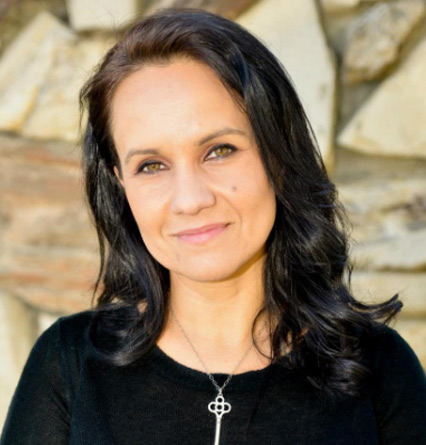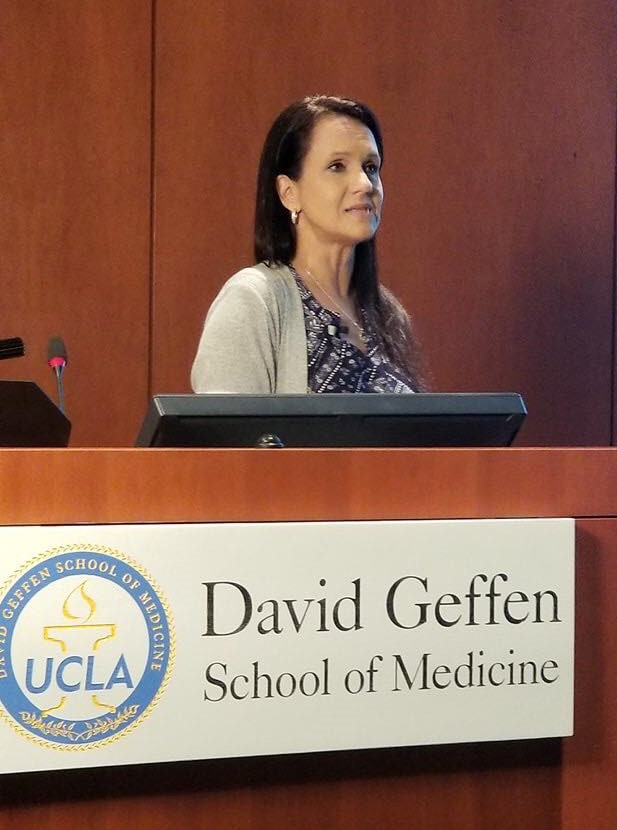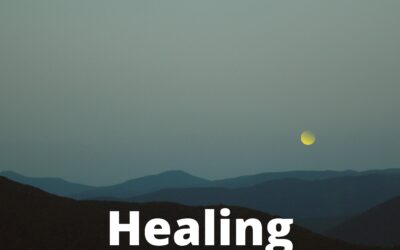The Intersection of COVID-19 and the Legacy of Trauma
“In the midst of this catastrophe, more than looking in to find serenity we need to look out for one another to practice humanity” – Abhijit Naskar
We need look no further than social media in this time of fear and uncertainty to be flooded with a stream of advice, coping suggestions, comparisons, judgments, shaming; divergent roads of seeming light and darkness. The lightness of planned days, structure, mindful practices, self-reflection and gratitude, and the ‘making the most of’ mentality veering vastly from the the darkness of despair, panic, loss of income, instability, isolation, sickness, flooded emotions, and grief. And our inevitable tendency toward comparisons doesn’t help matters. For many both the light and dark may co-exist, showing up in varying capacities depending on the hour or the day.
Here’s the truth – there is no right way to navigate this.
We are all swimming in unknown waters, and I am witnessing many people in different contextual stages of grief. There is no right way to show up or to cope. One person’s order is another person’s chaos. Your messy day as compared to someone’s peaceful day is not a measure of failure. Your only immediate task right now is to take care of yourself and get through this the best way you can… a temporary departure from the ideal of thriving versus surviving. Many of us are now navigating a triple threat of working/parenting/schooling all at one time. Many are still working on the front lines of a pandemic. Many have lost jobs, lost businesses, lost loved ones, lost their lives. Many can’t find employment. Ideas of moderate balance and self-care may be out the window. Or some may be able to rest into taking this time as an introspective journey. Conversely, your cup of coffee may be the only part of your day that holds any remnant of normalcy or routine. Many are describing feeling left out at sea without any sense of comfort or feeling led or taken care of, or feeling that they know which information to trust or listen to, and this may ignite another layer of distress for someone who has a history of this very experience. We are in one big storm together, but everyone is in their own individual boat, with their own individual set of stressors and resources. And our boats may all look pretty different. Circumstances are calling us to stay physically distant, when everything we need to get through this right now is support and connection.

I work extensively with individuals who have endured some form of trauma in their lives, and as I witness various journeys, I am seeing something emerge during these times that has been less spoken about, so much so that I felt moved to write about it in the hopes that it may resonate for more people and perhaps help in some way. For those that have a history of trauma, they may enter this time in a bit of a paradox. There will certainly be a multitude of different responses, many who will be triggered into their past by the current experience of uncertainty, fear, lack of safety, restriction, isolation, lack of control; these experiences perhaps mirroring their childhood. And they may experience an increase in emotional dysregulation and distressing symptoms during these times. Those who struggle with addiction are also at greater risk during this time, with a combination of uncertainty, isolation, and being alone in their head with which to contend. There are other individuals who have traumatic histories who may have a different experience. Their boat may be extremely worn down and weather beaten and it may not navigate storms smoothly, but the internal structure of their boat may have surprising reinforcement and bolstering that holds it together during these times. We might think of this in part as what research has identified as ‘grit’.
But there’s something else. Individuals who have internal alarm systems stuck at a higher set point due to trauma often experience struggles and symptoms in part as a result of the mismatch of their outer world to their inner world during more ‘normal’ times. For example, they may experience a minor life disruption or conflict as something much greater than it is. Their defense systems are wired to perceive threat and thereby engage protective mechanisms such as flight, fight, or freeze. In a relationship conflict these may look like either running away from or avoiding the argument, becoming more combative and retaliatory, or shutting down completely. Consequently, there can be feelings of guilt and/or shame when they later reflect on their mismatched responses. In coping with these dynamics, patterns of self-medication or other escape mechanisms may develop in attempts to find temporary relief, which of course further reinforces beliefs of badness or failure that may be rooted in their internalized trauma narrative, and perpetuates the inevitable cycle of shame and need for escape.
However, when a global pandemic arrives on our doorstep, some of these individuals may have a re-lived experience of the circumstances in the outside world once again matching their internal alarm system, matching their history. Their alarm is intricately wired to tune in to exactly these catastrophic circumstances. So for some, they may experience a paradoxical sense of calm even if they also experience moments of triggering and panic and fear. A state of familiarity and knowing in the fear and uncertainty. An odd sense of comfort and aliveness and function in the chaos. Finding function in the need to do something to keep others safe. There may be a sense of control despite everything being completely out of control. They may temporarily reduce certain need seeking behaviors because of feeling a familiar attunement to the crisis, because of the matching of inside and outside that is happening. The past feels once again present. The quarantine and self-isolation may also feel at times calming in the sense of feeling like there is permission to retreat, to have a break from ‘performing’ for the world around them, for them to feel safe in the controlled alone-ness and to have a sense of knowing where everyone is, giving them the experience of less exposed risk.
The time that may be more challenging for some of these individuals is when they have to anchor their boat once the storm is done. Their internal alarm system may have a hard time letting go and downshifting, even though circumstances will no longer require the same level of emergency response. They may not feel the same level of perceived control, function, aliveness, and self-efficacy outside of this boat and this storm. This is when the flood may hit… the feelings that haven’t yet been felt, expressed, and moved through; the needs that may surface now that there is time and space for them to be reflected on and hopefully met. This may bring a new grief along with a historical grief for developmental longings that still exist, yearning for something that didn’t happen, yearning for attunement and needing to be seen, while watching the world march on in what may feel like a jarring and abandoning normalcy. There will be a call for a recalibration to the new normal, a meeting of the parts of oneself – the young parts, the protectors – and ongoing conversations with those parts in an effort to adapt responses to one’s present self and experiences and needs, to others, to life, and in an effort towards ongoing integration and healing. There will be a need for a tuning in to one’s body and what is being held in tension, needing discharge and relief, so that the brain can receive a message of safety and loosen the grip of the armed guards.
Once upon a time there may have been a dire need for the proverbial firefighter to blast in to the room, coming to the rescue to put out the fire – the fires of traumas once taking place. And with a global pandemic, the internal firefighters have a job. They are resurrected and purposeful. Once we land and acute crisis passes, the firefighters may still want to blast into the room, only they are not needed now in the same way. And the water they blast when there is no ‘fire’ may create more damage that will need repair. The trauma story will beg to evolve and change to match the ‘you’ today, the one that survived and holds all the resources and strength and courage and grace. Read the full article HERE.
National Help Line for Substance Abuse
(800) 262-2463
Online Meetings – Alcoholics Anonymous https://www.aa.org/pages/en_US/options-for-meeting-online
Search for a therapist in your zip code. They have listings based on expertise, telehealth (online/phone options), sliding scale options, and whether they take insurance. https://www.psychologytoday.com/us
COVID-19 RESOURCE AND INFORMATION GUIDE – NAMI (NATIONAL ALLIANCE ON MENTAL ILLNESS) https://www.nami.org/getattachment/About-NAMI/NAMI-News/2020/NAMI-Updates-on-the-Coronavirus/COVID-19-Updated-Guide-1.pdf
COVID-19 MENTAL HEALTH RESOURCES https://dmh.lacounty.gov/covid-19-information/
About the Author:

Dr. Georgina Smith is a licensed Clinical Psychologist, EMDR clinician, addiction specialist, case management consultant, public speaker and educator.
Dr. Smith’s treatment specialties include addiction, trauma, relationship issues, borderline personality disorder, self-injury, impulse regulation issues, and eating disorders. Dr. Smith also has extensive experience treating depression, mood and anxiety disorders, personality disorders, domestic violence-related trauma, grief and loss, codependency, and phase-of-life difficulties.
Bringing a warm, supportive and direct approach to her work, Dr. Smith treats individuals (adult, adolescent and child), couples, and their families. She is an EMDR (eye movement desensitization reprocessing) clinician trained through EMDR Consulting and utilizes this tool to treat trauma, reduce distress, and adapt negative core beliefs. Dr. Smith also utilizes an eclectic blend of relational, narrative, cognitive-behavioral, dialectical behavioral, psychodynamic, systems and interpersonal neurobiology based therapeutic interventions to assist individuals in stabilizing distressing symptoms and building coping resources to self-regulate. She also works with individuals to address underlying issues contributing to current symptoms, while identifying and adapting negative core beliefs, life patterns and internalized stories from the past, which a focus on integration of core self, working to heal from traumas, and learning to assert and meet needs in healthy and empowered ways.




